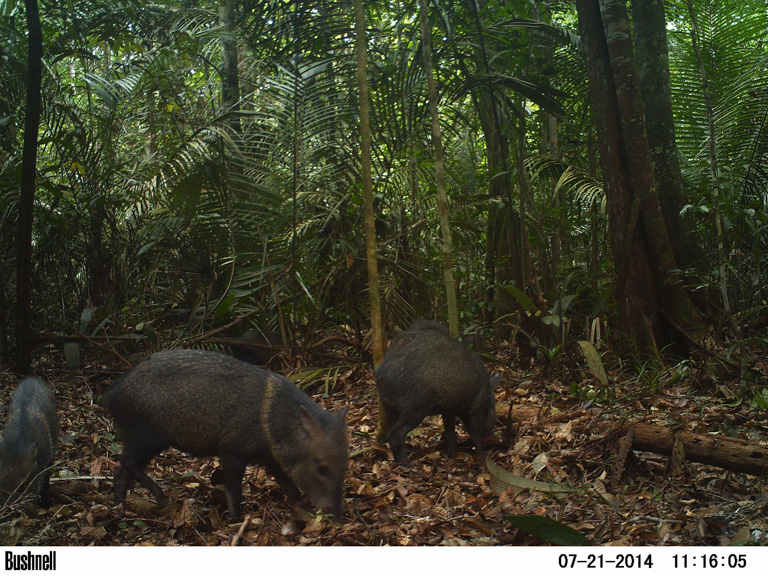- A team of scientists from the U.K. and Brazil used an array of 132 camera traps to snap more than 60,000 photographs around 47 farming communities in the Amazon.
- They also conducted 157 interviews with local farmers about the animals that they found most frequently in their fields.
- The researchers found that the animals that were most destructive to crops were also among the ones nabbed most frequently by their cameras.
Photographs of crop-raiding animals taken with camera traps and conversations with farmers in the Amazon suggest it’s possible to protect the diversity of life in the world’s largest rainforest while also ensuring that people have enough to eat.
“Rural Amazonian communities are some of the world’s poorest, but they live with the world’s highest biodiversity,” Mark Abrahams, an ecologist now at the Bristol Zoological Society in the U.K. and the lead author of the paper, said in a statement. “We wanted to find out how local communities are impacted by wild animals eating their crops.”

Abrahams and his colleagues, Carlos Peres of the University of East Anglia (Abrahams’ former institution) and Hugo Costa of the State University of Santa Cruz in Brazil, published their research Feb. 26 in the Journal of Wildlife Management. They report that crop raiders siphon off an average of about 8 percent of the manioc that a farmer plants each year in the Médio-Juruá region in the western Amazon rainforest. The farmers say that if they didn’t go to the considerable trouble of protecting their crops, they would expect to see losses that were around 10 times higher.
They also tend to plant more manioc of the “bitter” variety. Even though the higher cyanide levels make preparing the starchy tubers from this plant more of a chore, crop-raiding animals are less likely to go after it than they are the “sweet” variety.
The team set up camera traps next to farmers’ fields, and they found that the animals that were most destructive to crops were also among the ones nabbed frequently by their cameras.

Between 2013 and 2015, the team’s array of 132 camera traps snapped more than 60,000 photographs around 47 farming communities. The researchers also conducted 157 interviews with local farmers. These two complementary lines of inquiry pointed to five animals that are most damaging to crops, including red brocket deer (Mazama americana) and pig-like collared peccaries (Pecari tajacu), as well several rodents, including pacas (Cuniculus paca) and agoutis (Dasyprocta fuliginosa).
These animals are also among the ones that community members hunt most often. And, although the red brocket deer is classified as data deficient by the IUCN, none is endangered, Abrahams said, “so hunting them for subsistence does not threaten biodiversity, as long as conservation measures like protected areas and natural resource management are put in place.”
“This study shows that crop-raiding in the Amazon does not need to become a human-wildlife conflict,” Abrahams said. “Conservationists can work with local communities to support their management of natural resources.”

Right now, farmers use hunting and trapping to limit damage to crops about as often as they cordon off their fields with nets or set up scarecrows.
The findings highlight the need for conservationists to recognize the challenges that communities face as they work to feed themselves and their families.
“Coexisting side-by-side with wildlife often incurs a cost to subsistence farmers in tropical forests, which export colossal environmental services that enhance the lives of millions of people elsewhere,” Peres said in the statement.
This study presents an opportunity that doesn’t always exist at the intersection of protecting biodiversity and encouraging economic development, a mix that’s “sometimes presented as incompatible,” Abrahams said.
“Crop raiding has the potential to damage livelihoods and make communities hostile to conservation,” he added. “In our study region however, it seems that crop raiding is not an insurmountable barrier to conservation.”

Banner image of peccaries by Mark Abrahams/University of East Anglia.
Follow John Cannon on Twitter: @johnccannon
CITATION
Abrahams, M. I., Peres, C. A., & Costa, H. C. M. (2018). Manioc losses by terrestrial vertebrates in western Brazilian Amazonia. The Journal of Wildlife Management.
